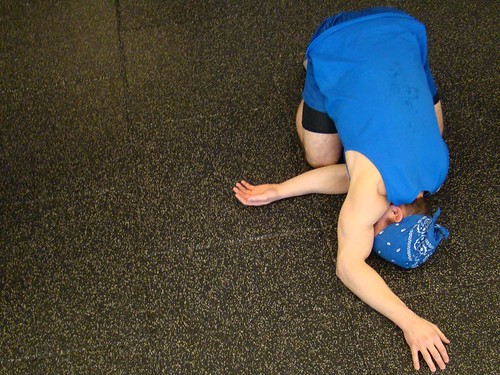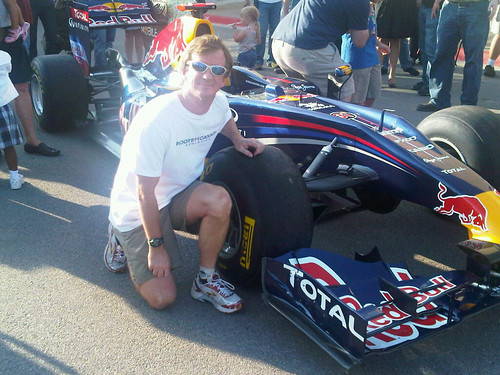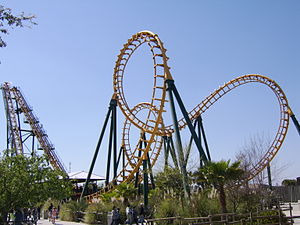 As my birthday came barreling towards me this year, I found myself pondering the concept of time. Oh, how it flies by. I can always remember being told how time would pass slowly in my younger years, and pick up speed each and every year as I got older. Truer words were never spoken.
As my birthday came barreling towards me this year, I found myself pondering the concept of time. Oh, how it flies by. I can always remember being told how time would pass slowly in my younger years, and pick up speed each and every year as I got older. Truer words were never spoken.
It seems like every year that passes reminds me to focus on the value of time itself. I guess it becomes more readily apparent when you realize that you are starting to get closer to the end of the adventure than the beginning. That’s not meant to sound morbid, but just a conscious acceptance of mortality as I know it.
I can look in the rear view mirror and be bewildered by the range and breadth of experiences I see there. Wow. Is all of that a part of me now? You never really know where you are going until you stop and take a look around you.
Oh if we could just cause time to stand still. Just for a moment.
 Although there is one reality, one series of events taking place in time and space, our perception of those events – and the data that we filter out – varies significantly from person to person. There is but one reality – or is there?
Although there is one reality, one series of events taking place in time and space, our perception of those events – and the data that we filter out – varies significantly from person to person. There is but one reality – or is there?
The world we live in, our personal map of reality, is largely shaped by our self perception and self image. Perceived competence and self-efficacy is derived from how we are treated, especially in the early years of our lives. How we are treated affects how we see ourselves, which in turn affects how we treat others and subsequently how we are treated by others.
The irony is that the one thing that provides us with the potential for personal transformation beyond our wildest imagination is that same entity that can provide us with a lifetime of challenges and limitations in our relationships and within ourselves. It’s all in the comfort zone.
 The Central Canada Exhibition (CCE), or Ottawa Ex, or SuperEx as it would eventually come to be known, was the Ontario equivalent to the State Fair of Texas. It would take place each August at Lansdowne Park in Ottawa – the home of the Ottawa Rough Riders football team. Yes, that would be Canadian football, that world of 3 downs for 10 yards, wide field, and huge end zones (how does 25 yards sound to you, Mr, Defensive Back?).
The Central Canada Exhibition (CCE), or Ottawa Ex, or SuperEx as it would eventually come to be known, was the Ontario equivalent to the State Fair of Texas. It would take place each August at Lansdowne Park in Ottawa – the home of the Ottawa Rough Riders football team. Yes, that would be Canadian football, that world of 3 downs for 10 yards, wide field, and huge end zones (how does 25 yards sound to you, Mr, Defensive Back?).
The CCE had your standard carnival rides and games, livestock shows, and lots of cotton candy and funnel cakes (or the Canadian equivalent). But they also had nightly music shows at the football stadium at Lansdowne Park.
My exposure to live music started at the CCE as a birthday present. During my teen years, it became a consistent birthday event. The only thing that changed was the music – and my age.
 If you ask 10 athletes or 10 coaches what a warm-up is supposed to consist of – and why – there will probably be at least 7 different answers. The warm-up (and cool-down) - and their importance in an training session - tend to attract a lot of debate and discussion.
If you ask 10 athletes or 10 coaches what a warm-up is supposed to consist of – and why – there will probably be at least 7 different answers. The warm-up (and cool-down) - and their importance in an training session - tend to attract a lot of debate and discussion.
Some people will tell you that the warm-up is the time to stretch. Or is it the cool-down that is important for stretching? Do you need to stretch at all? Better yet, do you need to warm-up at all? Should I care? Does it really make that much difference?
There is very little consensus on what a warm-up should entail. Little consensus, and a great deal of misinformation and anecdotal experience thrown in for good measure.
So what is the purpose of the warm-up? Once again, the answer lies in the brain.
 It was an up and down week for Formula One fans in Austin. Red Bull brought their F1 car to Austin this past week amidst confusion and perhaps a missed opportunity or two.
It was an up and down week for Formula One fans in Austin. Red Bull brought their F1 car to Austin this past week amidst confusion and perhaps a missed opportunity or two.
As of Monday (August 15), they had planned a demonstration run for Saturday, August 20, though they had not formally confirmed nor denied the weekend event. This was exciting news for the people of Austin, as it would be the first time that an F1 car would be fired up in anger here. I for one was looking forward to it. Red Bull typically does a great job when it comes to F1 promotional events – just take a look at the video (below) from the event in Belfast.
From there, it all went a little weird with a rather strange series of events. I was left wondering – did a great opportunity to promote F1 in Austin get squandered?
 The diagnostic process in health care is, at it’s most basic level, an example of the scientific method in action. Data is collected, a hypothesis is tested, and a diagnosis is made in order to then provide the patient with the most effective and appropriate treatment intervention.
The diagnostic process in health care is, at it’s most basic level, an example of the scientific method in action. Data is collected, a hypothesis is tested, and a diagnosis is made in order to then provide the patient with the most effective and appropriate treatment intervention.
Health care currently exists in a reductionist world. The goal has always been to understand complex problems by reducing them to the interaction of the parts. Virtually all health care providers are taught to think in terms of a patho-anatomical model – in terms of tissues, diseases and conditions. But the textbook cases rarely exist. If the clinician can’t put the patient into a nice, neat category, then what do they do? What happens when you can’t push that square peg of clinical presentation into the round hole of diagnosis?
Sadly, the scientific method has the answer: it is a failure of the patho-anatomical model, and of our own thinking.
 For many, losing weight is a roller coaster experience. They lose it, they regain it, they lose it, they regain it. People start looking for quick fix solutions. Many people never succeed in losing weight. Worse yet, many become obese without ever really understanding why.
For many, losing weight is a roller coaster experience. They lose it, they regain it, they lose it, they regain it. People start looking for quick fix solutions. Many people never succeed in losing weight. Worse yet, many become obese without ever really understanding why.
We now have boot camps and countless products that are “the best solution to losing weight”. And then we are exposed to TV shows like “The Biggest Loser”, with obese participants being yelled at by personal trainers who have almost militaristic and fanatical approaches to exercise.
Do these type of fanatical approaches just attempt to sell more product and prey on an unsuspecting, desperate, and highly fearful public? Does effective weight loss really require such drastic measures?
Effective weight loss has, at it’s core, a very simple premise. It is a simple math equation:
 "Running Injuries: Etiology And Recovery- Based Treatment" (co-author Bridget Clark, PT) appears in the third edition and fourth editions of "Clinical Orthopaedic Rehabilitation: A Team Approach" by Charles Giangarra, MD and Robert C. Manske, PT.
"Running Injuries: Etiology And Recovery- Based Treatment" (co-author Bridget Clark, PT) appears in the third edition and fourth editions of "Clinical Orthopaedic Rehabilitation: A Team Approach" by Charles Giangarra, MD and Robert C. Manske, PT.
 Allan Besselink, PT, DPT, Ph.D., Dip.MDT has a unique voice in the world of sports, education, and health care. Read more about Allan here.
Allan Besselink, PT, DPT, Ph.D., Dip.MDT has a unique voice in the world of sports, education, and health care. Read more about Allan here.
 Top 5 finalist in three categories: "Best Overall Blog", "Best PT Blog" and "Best Advocacy Blog".
Top 5 finalist in three categories: "Best Overall Blog", "Best PT Blog" and "Best Advocacy Blog".